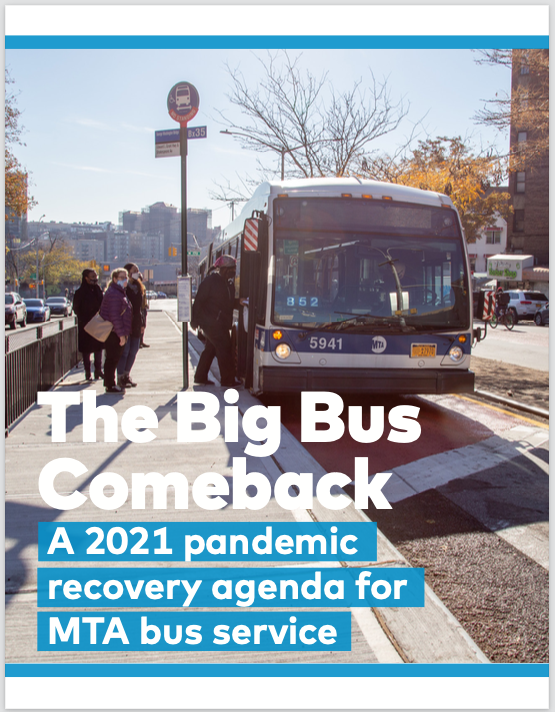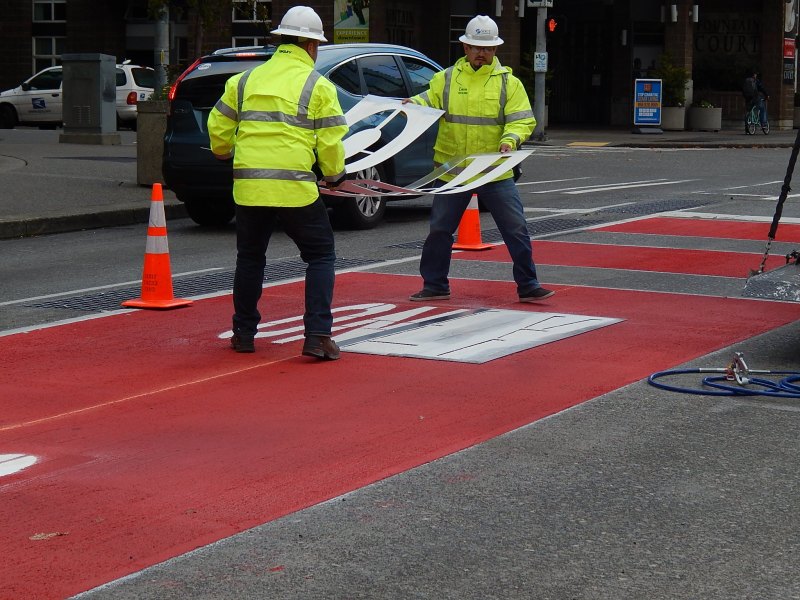This doesn’t have to be so hard.
The MTA has a number of easy-to-implement, already-developed, ready-to-go bus improvements that must be undertaken now to improve service as well as help shore up the agency's finances, a new report from the Bus Turnaround Coalition will argue today.

Rather than offer pie-in-the-sky solutions that would take years to put in place, the coalition — which is comprised of the Straphangers Campaign, TransitCenter, Riders Alliance and Tri-State Transportation Campaign — is urging a few basic solutions in its report, "The Big Bus Comeback":
- Fully install OMNY fareboxes in the back of the bus to enable all-door boarding.
- Implement The Bronx bus network redesign, which was shelved during COVID.
- Get more bus-mounted cameras to enforce the dozens of miles of dedicated bus lanes that already exist, plus the 30 or so more miles planned by the Department of Transportation.
- Revise bus timetables whenever routes improve so that drivers don't slow service to stay "on schedule."
Of course, the choice is the MTA's, the report argues. It can make these quick improvements now or go back to the same old "low-quality bus service that led ridership to dwindle for years."
That's no small dare. With cars largely sidelined during the early phase of the pandemic, bus service not only improved, but retained a higher share of its ridership than the subway system. So now is the time, the reporter argues, to improve service so the agency can retain and even add riders at a time when subway turnstiles are collecting not nearly as many fares as before the pandemic.
And the MTA can't cry poverty for several reasons: not only did the federal stimulus provide the agency with billions of much-needed funding, the costs of the improvements are "inexpensive yet effective," the coalition said.
And most are already in the works.
For example, all-door boarding was supposed to be fully implemented by the end of this year, but the MTA may be backtracking, saying that rear-door boarding may not be ready until 2023, when the MetroCard is retired.
Transit chief, asked about all-door boarding, she says 2022 launch, but thinks it can be started earlier and they're "debating internally"
— Dan Rivoli (@danrivoli) January 26, 2021
It's an essential improvement. According to the coalition, buses spend more than 20 percent of their time standing still at stops (known as “dwell time”). But dwell time is down 40 percent on Select Bus Service routes that already feature all-door boarding.
The group also claims that the pandemic showed the need for the bus network to be redesigned — and the one prepared for The Bronx is ready to go.
"Ridership patterns in the Bronx during the pandemic reinforce the wisdom of many changes in the redesign: Routes that are designated to receive more frequent service also tend to be the ones that have retained the most ridership," the coalition said.
Most important is improving bus lane enforcement. Only seven lines have bus-mounted cameras. Dozens more could.
"Procuring more bus-mounted cameras is a small expense in the MTA’s capital budget," the report says. "Furthermore, the bus camera enforcement program is administered by NYC DOT, while revenues from bus-mounted cameras go toward the MTA."
Look, it's not like the MTA doesn't agree with the basic findings of the report.
“We appreciate TransitCenter’s focus on buses and look forward to getting back to work on all elements of our Bus Plan as New York City returns in the coming months,” MTA Bus Company President Craig Cipriano said in a statement.






